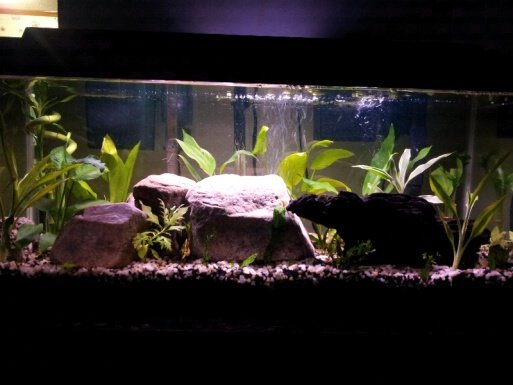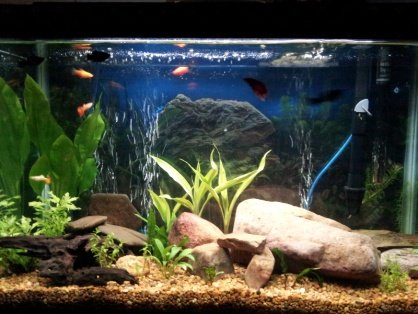Nimo
Aquarium Advice FINatic
I am starting a new thread because I have a new project. As some of you know I just got green spotted puffers that are going to have to be converted. I currently have 3 spotted puffers in a 20 gallon long, now don't get up set. I ordered pea puffers and spent a lot of time setting up this tank for the dwarfs. I found after I got them that they were not dwarfs thanks to you guys on here. They are still less than an inch for now. Tomorrow they will be moved to a 30 gallon, I have to do allot of moving fish around to empty the 30 for them. I know they need larger and I will get a large set up for them asap just can't run out and buy it right away.
Any way I am going to slowly convert the 30 to brackish and eventually full marine as that is what the puffers need. So when I get a bigger set up I can cycle it for salt water and them get these guys in a better home.
Any thoughts or ideas that might make this easier for me and my fish I would love to hear.
Edit forgot to mention that the 30 gallon they are being moved to is a fully cycled fresh water tank. It has a heater. A 50 gallon penguin bio wheel and a tetra 30 gallon filter.
Any way I am going to slowly convert the 30 to brackish and eventually full marine as that is what the puffers need. So when I get a bigger set up I can cycle it for salt water and them get these guys in a better home.
Any thoughts or ideas that might make this easier for me and my fish I would love to hear.
Edit forgot to mention that the 30 gallon they are being moved to is a fully cycled fresh water tank. It has a heater. A 50 gallon penguin bio wheel and a tetra 30 gallon filter.



 I'm sorry, but I left out a key word. Live rocks, HOBs, or canisters will NOT help decrease the frequency of water changes. Some of you probably already know that.
I'm sorry, but I left out a key word. Live rocks, HOBs, or canisters will NOT help decrease the frequency of water changes. Some of you probably already know that.